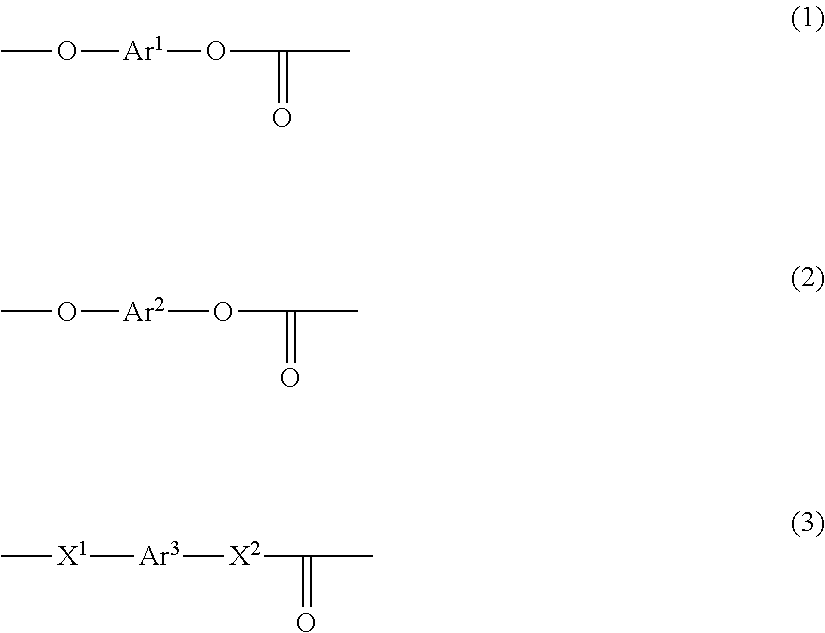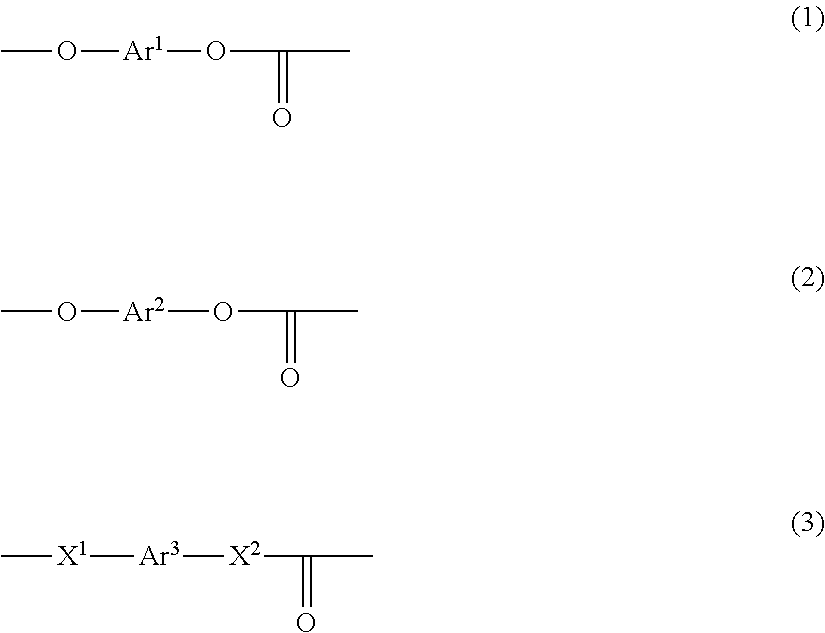Polycarbonate copolymer, and coating liquid and electrophotographic photosensitive body using same
- Summary
- Abstract
- Description
- Claims
- Application Information
AI Technical Summary
Benefits of technology
Problems solved by technology
Method used
Image
Examples
examples
[0192]Next, the present invention is described in more detail by way of Examples and Comparative Examples. However, the present invention is not limited by Examples below, and various modifications and applications are possible without departing from the spirit of the present invention.
production examples
Preparation of Oligomers
Production Example 1
Synthesis of Bisphenol Z Oligomer (Bischloroformate Oligomer)
[0193]56.6 kg (224 mol) of 1,1-bis(4-hydroxyphenyl)cyclohexane (bisphenol Z) were suspended in 1,080 L of methylene chloride, and 66.0 kg (667 mol) of phosgene were added to and dissolved in the suspension. A liquid obtained by dissolving 44.0 kg (435 mol) of triethylamine in 120 L of methylene chloride was dropped to the solution at from 2.2 to 17.8° C. over 2 hours and 50 minutes. After the mixture had been stirred at from 17.9° C. to 19.6° C. for 30 minutes, 900 L of methylene chloride were removed by distillation at from 14 to 20° C. 210 L of pure water, 1.2 kg of concentrated hydrochloric acid, and 450 g of sodium hydrosulfite were added to the remaining liquid to wash the liquid. After that, washing with 210 L of pure water was repeated five times to provide a methylene chloride solution of a bisphenol Z oligomer having a chloroformate group at a molecular terminal thereof....
production example 2
Synthesis of Bisphenol E Oligomer (Bischloroformate)
[0197]73.0 g (0.341 mol) of 1,1-bis(4-hydroxyphenyl)ethane (bisphenol E) were suspended in 410 mL of methylene chloride, and 68.7 g (0.682 mol) of triethylamine were added to and dissolved in the suspension. The solution was dropped to a liquid obtained by dissolving 65.0 g (0.689 mol) of phosgene in 245 mL of methylene chloride at from 14 to 18.5° C. over 2 hours and 50 minutes. After the mixture had been stirred at from 18.5° C. to 19° C. for 1 hour, 250 mL of methylene chloride were removed by distillation at from 10 to 22° C. 73 mL of pure water, 4.5 mL of concentrated hydrochloric acid, and 0.47 g of sodium hydrosulfite were added to the remaining liquid to wash the liquid. After that, washing with 330 mL of pure water was repeated four times to provide a methylene chloride solution of a bisphenol E oligomer having a chloroformate group at a molecular terminal thereof. The resultant solution had a chloroformate concentration o...
PUM
| Property | Measurement | Unit |
|---|---|---|
| Photosensitivity | aaaaa | aaaaa |
Abstract
Description
Claims
Application Information
 Login to View More
Login to View More - R&D
- Intellectual Property
- Life Sciences
- Materials
- Tech Scout
- Unparalleled Data Quality
- Higher Quality Content
- 60% Fewer Hallucinations
Browse by: Latest US Patents, China's latest patents, Technical Efficacy Thesaurus, Application Domain, Technology Topic, Popular Technical Reports.
© 2025 PatSnap. All rights reserved.Legal|Privacy policy|Modern Slavery Act Transparency Statement|Sitemap|About US| Contact US: help@patsnap.com



